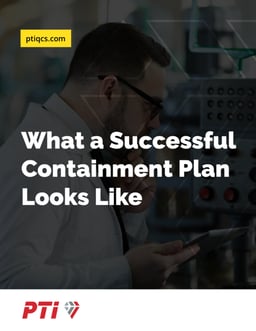We’re in the midst of an unprecedented outbreak as the Covid-19 coronavirus spreads across the world. Already, more than 118,000 people have been infected and nearly 4,300 have lost their lives. Governments are scrambling to isolate the virus and limit its impact on citizens, but there are substantial potential economic impacts from such actions.

China took the extraordinary step in February of closing factories and limiting public gatherings of its citizens in dozens of provinces, effectively grinding production to a halt for several weeks - companies are still feeling the impact in the supply chain. Now, we’re looking at similar possible actions in North America. Major corporations like Microsoft, Google, Twitter, and dozens more have already many employees to work at home to limit the risk. Monday this week, the Director of the CDC’s National Center for Immunization and Respiratory Diseases noted that “As the trajectory of the outbreak continues, many people in the U.S. will at some point, either this year or next, get exposed to this virus.”
There’s no way to accurately project what kind of impact that might have on our economy (as the stock market’s recent turbulence can attest), but it certainly has most organizations scrambling, in some cases pushing production into high gear to try and clear as many parts and assemblies as possible before potential worker illnesses or plant shutdowns create disruptions. We’re already starting to see quality incidents spike because of the rushed efforts, and this will only continue as organizations push to meet as much of their 2020 targets as possible.
High turnover, lack of personnel due to illness and the restarting of operations after shutdown are all major issues that plants will need to deal with. If you don’t yet have a quality containment plan, now is the time to implement one.
Why a Containment Plan Matters
For most organizations, quality containment is a reactive effort. It’s the result of a failure at some point in production and an added cost that no one wants to consider. But it can be a value-add for your organization when implemented preemptively. A good quality containment plan prepares your organization for the eventuality of a disruption, reducing the risk of such an issue, decreasing the impact, and ultimately streamlining your response.
In the case of impact from the Coronavirus, there are new and potentially disruptive ways that quality can be impacted:
- Higher than average turnover due to illness or shutdowns.
- Lack of personnel even if the plant remains open.
- Having to restart operations after a shutdown, which in itself can be a potentially problematic situation.
Containment should identify the source of a problem, map out how best to resolve that problem and implement systemic changes to keep it from recurring. That can mean identifying impacted part numbers, quarantining work in progress, stock, and parts in transit, and identifying the specific containment actions needed to address the issue until RCCA can be established. A good containment plan lines up all of these efforts and coordinates them around not only future occurrences but based on historical data.
That plan will guide your plant through each of the steps in effective containment while you determine what went wrong and resolving it as quickly as possible. When time is of the essence, having such a plan in place that can be executed rapidly will not only protect value but help you stay on track in the event of impact from the coronavirus.
Creating a Plan to Proactively Inspect
Process control audits and layered control audits for the inspection process will allow you to proactively evaluate parts as they come off the line or in from suppliers to ensure there are no quality issues that further disrupt production. This includes:
- Evaluating the effectiveness of each of your existing quality protection layers.
- Creating new layers beyond initial visual inspections - these are often not 100% effective, so having a secondary layer to protect is important.
- Determining if the gauges and tools you have are sufficient for a comprehensive inspection.
While you likely already have several systems and processes in place to evaluate the quality of parts and act when defects are identified, a comprehensive inspection and quality containment plan will help keep things moving, even as worker availability decreases and supplier quality wavers.
Getting Ahead of the Coming Wave

How disruptive the Covid-19 outbreak eventually becomes remains to be seen, but having already spread to dozens of countries and most of the United States, it’s likely we have yet to see the worst of the impact.
When downtime and quality disruption can potentially cost your organization millions, protecting quality becomes more important than ever. Learn more about what a successful containment plan looks like and how to start building and implementing one for your organization in our eBook:



